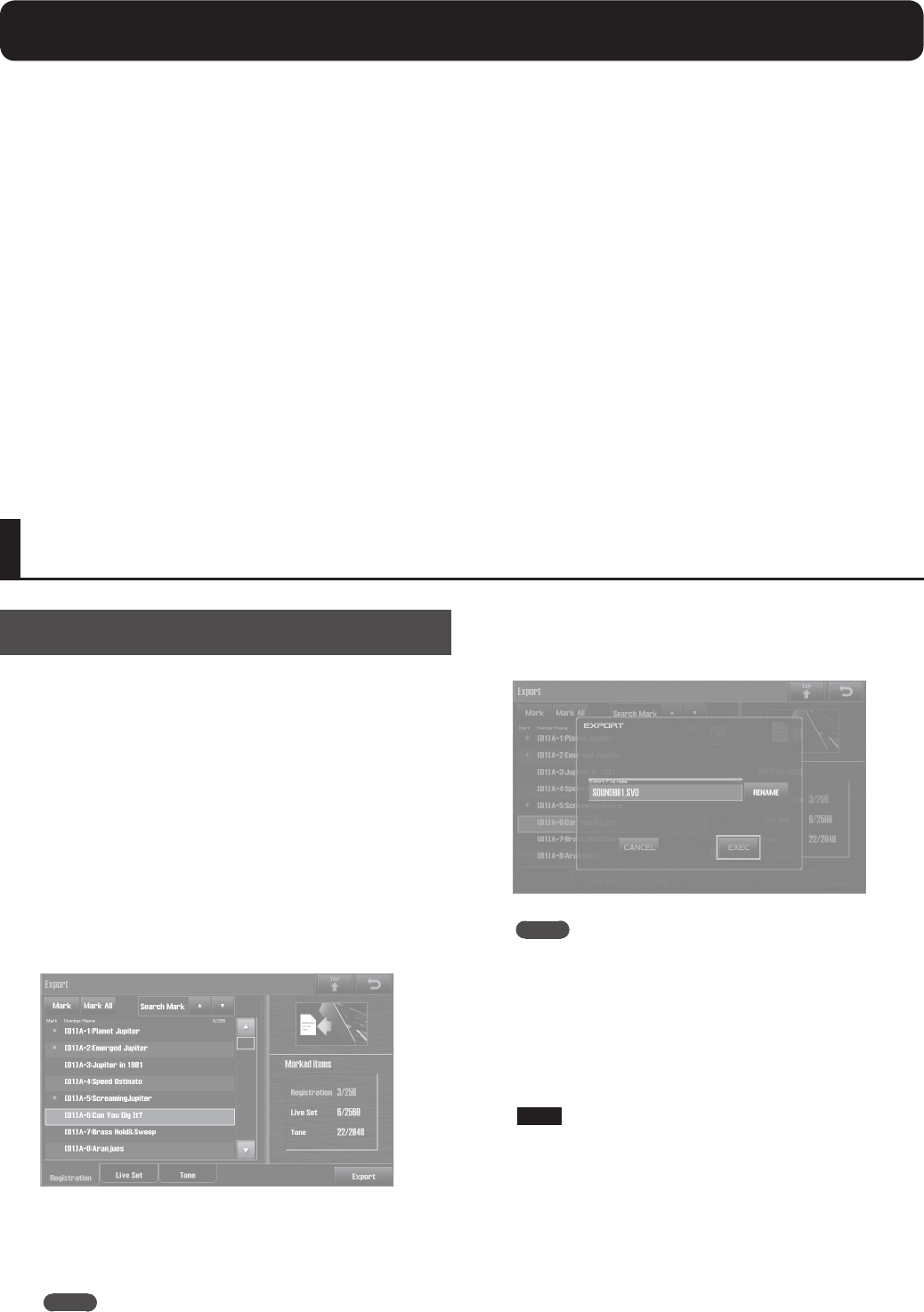
1
This manual explains the functions that have been added in version 1.10 of the JUPITER-80.
Read this manual in conjunction with the JUPITER-80 Owner’s Manual.
Exporting/Importing Sound Data (P.1)
Registrations, live sets, and tones (SuperNATURAL Synth Tones only) that you edit on the JUPITER-80 can now be exported to a USB ash drive.
From the data exported to a USB ash drive, you can also select the desired registrations, live sets, and tones, and import them back into the JUPITER-80.
Moving or Exchanging Registrations (P.3)
Registrations saved in the JUPITER-80 can now be moved or reordered.
Single Part Play (P.4)
A registration that is optimal for playing only a single part has been added.
If you select this registration, only a single part will sound; when you select the sound of a dierent part, the previously selected part will automatically turn o.
USB Driver (P.4)
In addition to the dedicated JUPITER-80 USB driver, you can now use the default driver provided by the operating system (MIDI only).
Erasing an Arpeggio Style (P.4)
You can now erase a user arpeggio style.
JUPITER-80 Version 1.10 Supplementary Manual
Copyright © 2011 ROLAND CORPORATION
All rights reserved. No part of this publication may be reproduced in any form without the written permission of ROLAND CORPORATION.
Exporting/Importing Sound Data
Exporting Sound Data
From the registrations, live sets, and tones saved in the JUPITER-80, you
can select the desired items and export them to a USB ash drive.
When you export a registration, the live sets and tones used by that
registration will also be exported.
In the same way, when you export a live set, the tones used by that live
set will also be exported.
1. Press the [MENU] button.
2. Touch <Next>/<Prev> to switch to “Page 2/2.”
3. Touch <Export>.
4. Mark the sound data that you want to export.
Select the desired registration, live set, or tone, and touch <Mark>. If the
item was already marked, the mark will be cleared.
You can also use the tabs to switch between registrations, live sets, and
tones.
When you mark an item, an “*” will appear at the left of the Number/
Name.
A “+” symbol will automatically appear for the live sets or tones used by
sound data marked with an “*” symbol. The “+” symbol cannot be directly
erased.
MEMO
The only tones that can be exported are SuperNATURAL Synth tones.
5. Touch <Export>.
You can rename the le that will be exported.
To rename the le, touch <RENAME>.
MEMO
• The exported sound data will be saved together in a single le named
***.SVD, located below /ROLAND/SOUND in the USB ash drive.
• If you export a registration that uses a user arpeggio style, the two
les ***.SVD and ***.BIN will be created.
6. Touch <EXEC>.
The screen will ask “Are you sure?”
7. To carry out the export, touch <OK>.
NOTE
Never turn o the power while the export operation is in progress.






